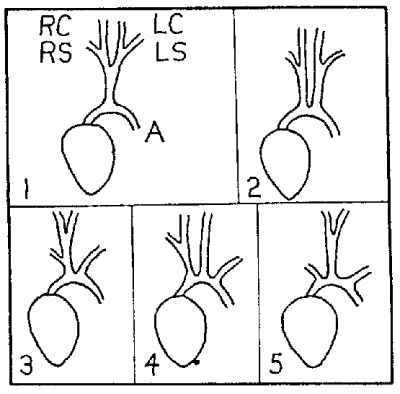 |
Science Frontiers ONLINE No. 30: Nov-Dec 1983 |
|
|
THE AORTIC ARCH AND EVOLUTION
- Horses, pigs, deer;
- Whales, shrews;
- Marsupials, rats, dogs, apes, monkeys;
- The platypus, sea cows, some bats, humans;
- African elephants, walruses.
(Davidheiser, Bolton; "The Aortic Arch," Creation Research Society Quarterly, 20:15, 1983.)
Comment. On this basis alone, humans are more closely related to sea-cows than the apes. Why aren't such discrepancies highlighted in the mainstream scientific literature?
 | Mammalian aortic arch . The key is as follows: RC: right carotid; LC: left carotid; RS: right subclavian; LS: left subclavian; A: aorta. The kinds of animal which have various arrangements are mentioned in the text. |